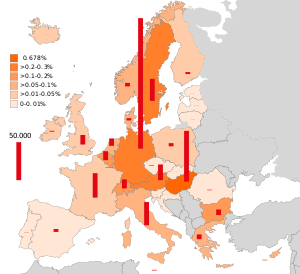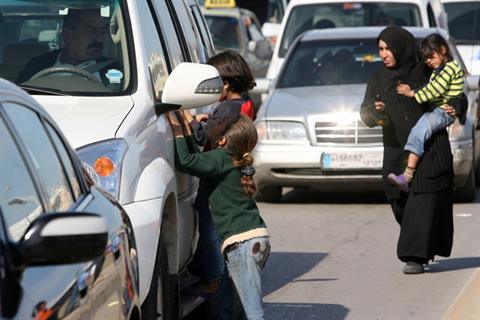Nearly 2 million Syrian children are refugees, the United Nations Refugee Agency (UNHCR) reports. An upsurge in fighting has complicated aid efforts as the conflict enters its fifth year.
Here’s background on the humanitarian needs in Syria and among refugees in the region
How many people have fled their homes?
About 3.9 million have fled as refugees to neighboring countries and more than 7.6 million people are internally displaced (IDPs) within Syria.
Does the number of refugees show any sign of slowing?
No. UNHCR registered about 900,000 new refugees in 2014, adding to the 2.3 million who had left Syria since war erupted in 2011.
From January 2 to March 10, about 200,000 more people fled Syria for neighboring countries. Their main destinations are Jordan, Turkey, Lebanon, Egypt, and Iraq, though conflict in Iraq now discourages that option.
What are the refugees’ greatest needs?
Refugees need food, clothing, stoves and fuel for heat and cooking, and basic household and hygiene items. They need reliable supplies of clean water, and sanitation facilities.
Children need a safe, protective environment and a chance to play and go to school.
Adults need employment options to provide for their families while displaced.
The UN Office for the Coordination of Humanitarian Assistance says 12.2 million people inside Syria need some form of help, including millions of children who cannot go to school.
Where are the refugees living?
More than 1.1 million refugees are in Lebanon. Many have taken up residence there in communities’ abandoned buildings, sheds, spare rooms, garages, and in tent settlements on vacant land.
Conditions are often crowded and unsanitary. Even so, families struggle to pay rent for these spaces.
Turkey hosts more than 1.6 million Syrian refugees. Iraq, facing its own armed conflict, is hosting about 244,000 Syrians. Nearly 620,000 refugees have settled in Jordan, mostly with host families or in rented accommodations.
About 84,000 live in Za’atari , a camp near the northern border with Syria, and about 15,000 live in Azraq , a camp that opened last April to ease the pressure at Za’atari.
What risks do children face?
Children are especially susceptible to malnutrition and diseases related to poor sanitation. Many suffer from diarrheal diseases and dehydration.
Because of the breakdown of the Syrian health system and lack of adequate immunization, there have been outbreaks of measles and even polio in Syria and among refugee children.
Children are more vulnerable to sexual abuse and exploitation in unfamiliar and overcrowded conditions.
Without adequate income to support their families and fearful of their daughters being molested, parents—especially single mothers—may opt to arrange marriage for girls as young as 13.
What is the impact on refugee children’s education?
After four years of brutal conflict, 2.8 million children are out of school, the UN Children’s Fund (UNICEF) reports.
For children inside Syria, the reasons are many: insecurity, teachers absent or deceased, and schools destroyed or occupied by warring groups or displaced families.
For refugee families that don’t live in camps, paying rent and other expenses can make it difficult for parents to afford books, uniforms, and tuition fees for their children.
In Lebanon, the government has opened public schools to Syrian children, but language barriers, overcrowding, and the cost of transportation keep many refugee children out of school.
- See more at: http://www.worldvision.org/news-stories-videos/faqs-war-syria-children-and-refugee-crisis#sthash.F3MRsWwq.dpuf





